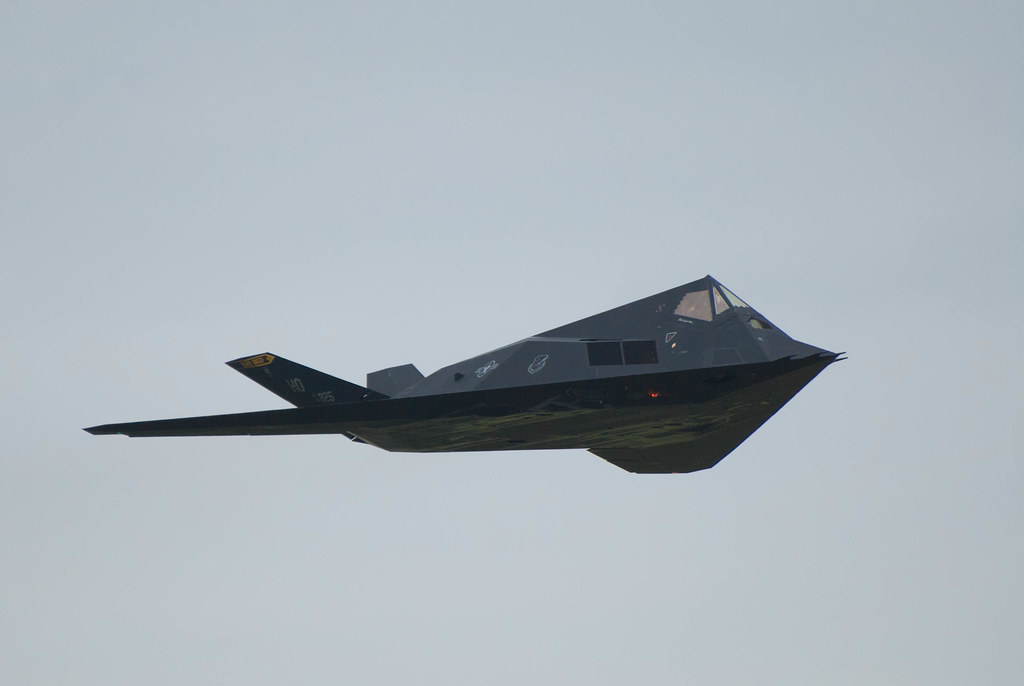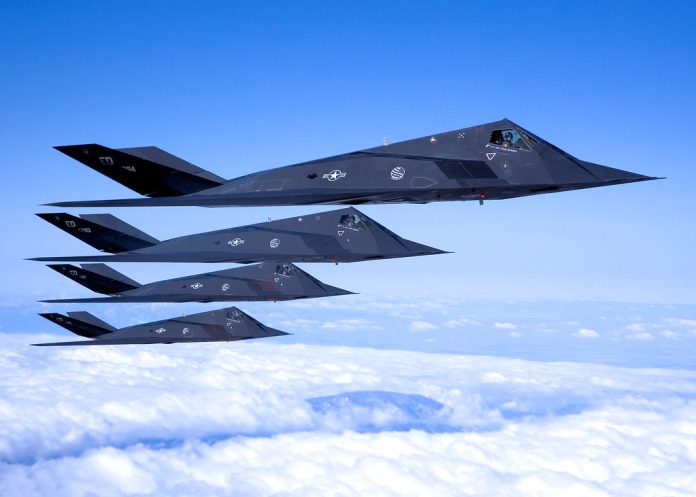
In the shadows of defense history, a legacy was forged that would redefine aerial combat and national security. It was a revolution sparked not by the roar of engines or the speed of flight, but by an unprecedented silence—a stealthiness that allowed warplanes to slip past radar’s electronic gaze.

This is the story of Lockheed’s Skunk Works and its indelible mark on military aviation with the creation of the F-117 Nighthawk, an aircraft so advanced it was once perceived as a pole on radar screens.

Lockheed’s legendary Skunk Works division has long been synonymous with top-secret, cutting-edge technology—where the wildest dreams of aeronautical engineering take flight.

The story began eighty years ago, when the veil of secrecy first descended upon a group led by industry titans Ben Rich and Clarence “Kelly” Johnson. Their mission: to develop breakthrough military technology at breakneck speed.

In their unassuming Burbank facility, the Skunk Works team took an unconventional path, renting a circus tent to birth the P-80 Shooting Star—America’s first jet fighter.

This rapid and clandestine innovation was merely the prologue to a series of historic achievements, such as the U-2 spy plane and the SR-71 Blackbird, which captured critical intelligence and broke speed records.

The real game-changer, however, arrived in the 1980s with the Nighthawk, a brainchild born out of a crucial discovery by Denys Overholser. The key was a 40-page Soviet research paper by physicist Pyotr Ufimtsev, which provided the mathematical magic to render an aircraft nearly invisible to radar.

The Nighthawk’s stealth was so profound it even outfoxed the Air Force’s own radar during tests, leading to the humorous yet historic demand: “Since you’re so damned clever, build us a new pole!”

The Nighthawk’s success was not just measured in its elusive radar signature. It stood as a silent sentinel during pivotal moments of military history, from the waning days of the Cold War to the sands of the Persian Gulf.

In Operation Desert Storm, the F-117A flew 1,271 sorties with an impressive 80 percent success rate, without losing a single craft to enemy fire—a testament to its designers’ genius.

Even after its official retirement, the F-117 maintains a ghostly presence in the skies, with reports of flights over California suggesting that its role in military strategy may not yet be fully written.

While only a few have been donated to museums, the Nighthawk continues to inspire awe as a symbol of American ingenuity and a harbinger of future aeronautical marvels.

Lockheed’s Skunk Works doesn’t dwell in past glories, as speculation runs rampant about their current projects. While details remain cloaked in mystery, whispers of hypersonic aircraft and a potential SR-72 Darkstar spark imaginations, evoking the division’s tireless pursuit of the impossible.

In celebrating the 75th anniversary of innovation at Skunk Works, it is the Nighthawk that stands as a monolithic example of how creativity and tenacity can overcome technological barriers.

As the Skunk Works story unfolds behind closed doors, what remains visible is the indelible impact of its stealth revolution—a legacy that continues to shape the trajectory of modern warfare and the security of nations.
Relevant articles:
– Skunk Works: How the U.S. Military Became a Stealth Fighter Superpower, The National Interest
– Stealth, Speed, and Supersonic: Lockheed Martin’s Skunk Works Marks 80 Years, Security Clearance Jobs
– This Photo Is the Reason the U.S. Air Force Is a ‘Stealth’ Superpower, The National Interest
– Skunk Works Celebrates 75th Anniversary of Innovation and Secrecy, The Aviationist

